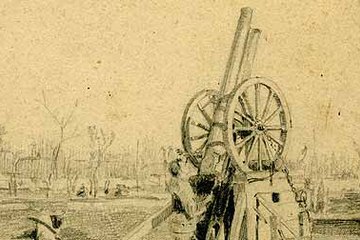The Procurement Campaign of 1915-16 and the ‘Knoller Programme’
In view of the precarious state of the Aviation Corps’ equipment, from 1915 it was decided to take sweeping measures to ensure the supply of aeroplanes. Particular importance was given to the ‘Knoller Programme’.
In view of the urgent need for modern aircraft a number of measures were taken by the Aviation Corps from 1915. One step taken immediately was to order eighty-six Hansa-Brandenburg B I aircraft, and these were also manufactured by the Aviation Corps itself at its arsenal in Fischamend, where 355 aircraft were produced. However, these aeroplanes were basically already obsolete and were soon used only for training purposes. Furthermore, Austro-Hungarian manufacturers also entered the market with numerous aircraft models of their own. In all during the First World War some 125 prototypes were developed. Only a few of these went into series production, but nevertheless an uneconomic diversity of models arose. The central measure of the procurement campaign, which was intended both to provide modern aircraft quickly and to pursue industrial policy aims against the Castiglioni Group, was the so-called ‘Knoller Programme’, which provided for the development and mass production of powerful two-seater warplanes.
Richard Knoller, a professor at the Technical University in Vienna, was regarded as a competent aviation expert with whom the Aviation Arsenal had already cooperated. Thanks to his excellent reputation and the decided preference for him on the part of the military, a great deal of confidence was enjoyed by the project from its inception. The programme was under considerable time pressure and became a question of prestige for Knoller and the decision makers who had so conspicuously supported him. The programme had three phases, in which the three aircraft types Knoller B I, C I and C II were developed. In January 1915 the small Thöne & Fiala aircraft works was entrusted with work on the Knoller B I biplane. As early as the planning stage there were delays, and the maiden flight of the prototype on 13 November 1915 revealed serious structural and aerodynamic shortcomings. Many months were then spent making improvements, but new tests carried out from January to April 1916 continued to reveal structural deficiencies and problems in controlling the aeroplane. Nevertheless a further forty-three aircraft were ordered before the model was rated as unsuitable for service at the front in July 1916.
Parallel to this, from late autumn 1915 preliminary work on a more powerful model, the Knoller C I, had begun at the Phönix works in cooperation with the Aviation Arsenal. Technical problems meant that the first aircraft were not ready until April 1916, and then there was a repetition of what had happened in the case of the B I. These new aeroplanes also turned out to be a wasted investment. However, Knoller’s reputation and the decisions of the military were above criticism to such an extent that there was even a third attempt, the development of the Knoller C II biplane, which again turned out to be a failure. It was not until spring 1917 when Parliament, which had not met since 1915, was again convened, that one of the deputies, Count Adalbert Sternberg, revealed the wrong line of development which had been so stubbornly pursued, leading to the discontinuation of the Knoller Programme. In all the Aviation Corps commissioned some 185 Knoller aircraft between 1915 and 1918. This led not only to the miltary acquiring a large number of unusable aeroplanes, but also to considerable delays in the supply of more effective aircraft that were already available, and to resources, which were becoming increasingly scarce during the war, being wasted.
Translation: Leigh Bailey
Desoye, Reinhard: Die k. u. k. Luftfahrtruppe. Die Entstehung, der Aufbau und die Organisation der österreichisch-ungarischen Heeresluftwaffe 1912–1918, 2 Bände, Wien 1999
Grosz, Peter M./Haddow, George/Schiemer, Peter: Austro-Hungarian Army Aircraft of World War One, Boulder 2002
Pelz, Martin: Die Geschichte des Flugzeugbaus in Österreich von den Anfängen bis zur Gegenwart, Diplomarbeit an der WU Wien 2001
-
Chapters
- Powered Flight as a New Technology
- The Invention of Aerial Warfare and How War Propaganda Hyped up the Flying Aces as a Form of Motivation
- The Origins of the Imperial and Royal Austro-Hungarian Aviation Corps
- The Beginnings of Aircraft Manufacture in Austria
- The Situation of the Austro-Hungarian Aviation Corps in the Years 1914-15
- The Procurement Campaign of 1915-16 and the ‘Knoller Programme’
- The Most Important Aircraft Types of the Austro-Hungarian Aviation Corps and Their Wartime Service






